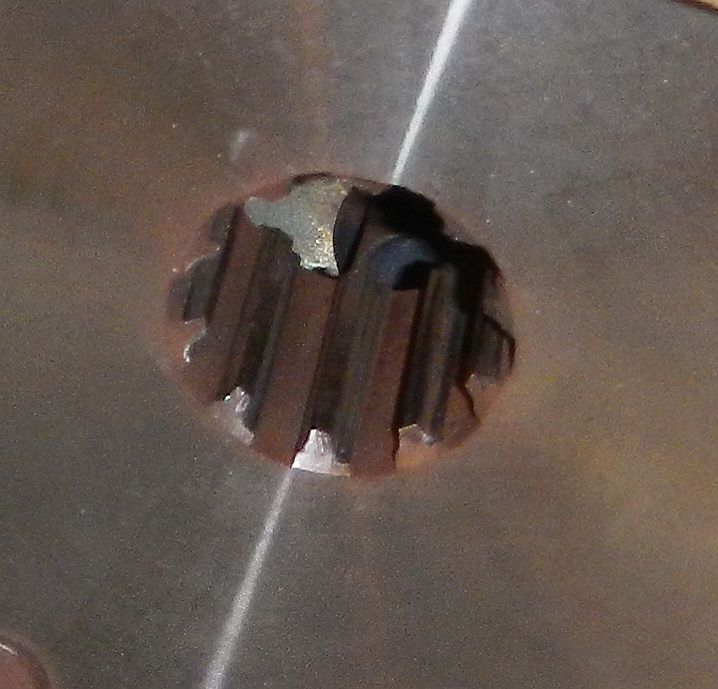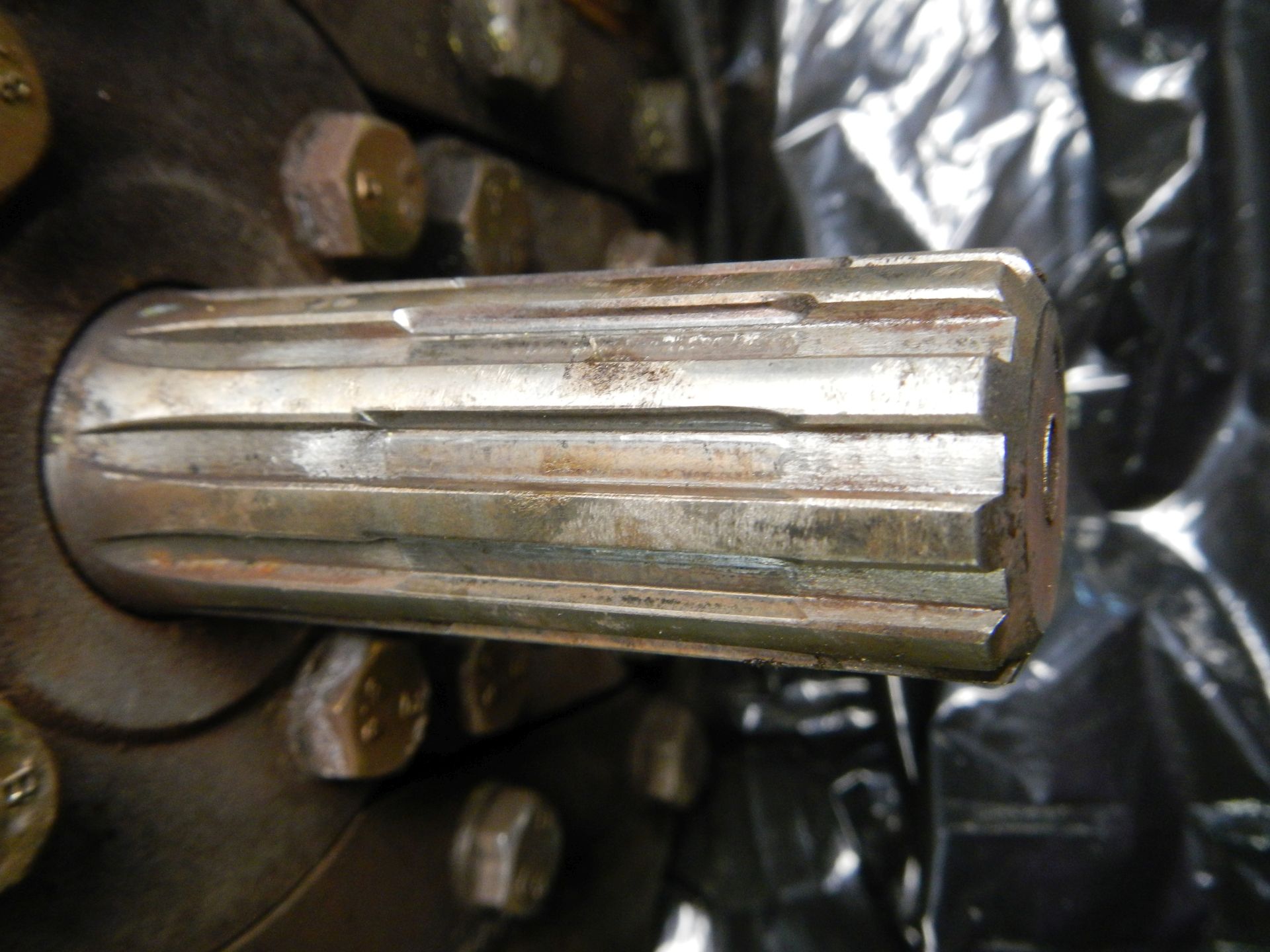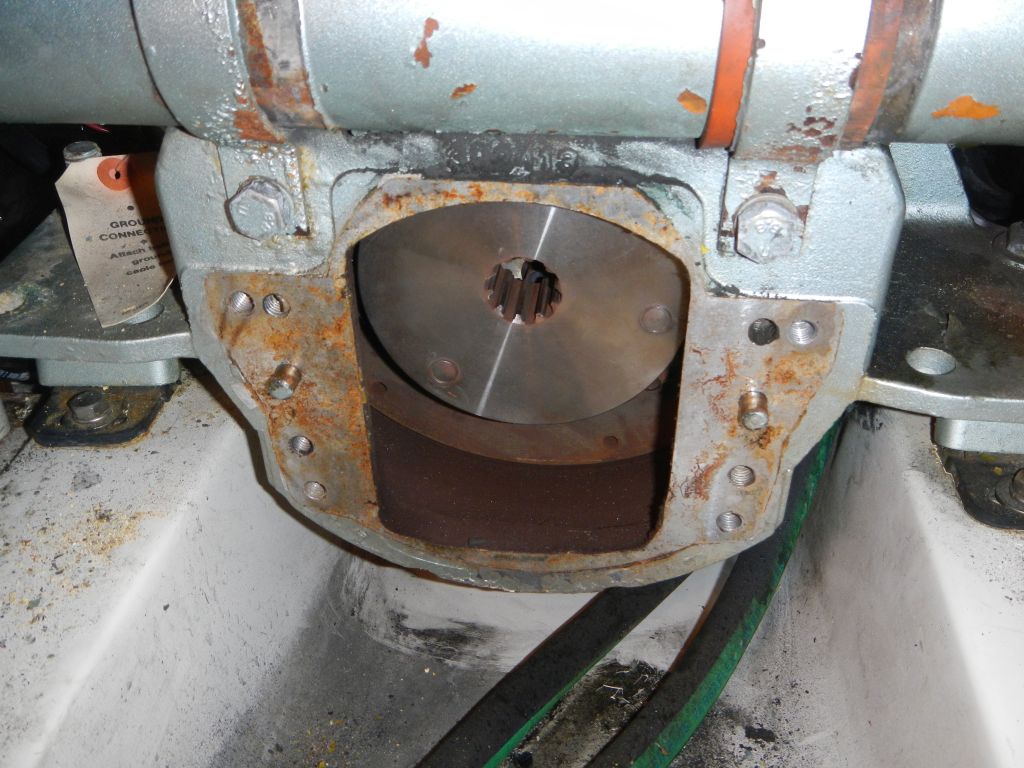I am looking for some wisdom and experience from members of this list on Damper Plates.
I am in the process of replacing our HBW-100 transmission. I have about 2800 hours on it and it does not reliably go into reverse. It takes a varying 2 to 10 seconds to drop into reverse. The cable adjustment is right on center where it should be. I had to readjust this before around 2000 hours.
Frequent transmission fluid changes (every 100 hours) kept the transmission running fine until approaching 2800 hours.
I had changed the Damper Plate around 1200 hours, to a PYI, R&D Damper 22B4. The springs in the old original Sachs Damper Plate were getting rather loose and rattled. The spline on the Transmission was in perfect shape, with no visible wear at that time.
When I pulled the transmission I was quite surprised to see the extensive wear on the supposedly hardened transmission spline. This obviously rules out rebuilding the transmission. As expected the spline on the Damper Plate had even more wear. The spline interface had not been previously greased and I did not grease the new one, which in hindsight I probably should have done.
I talked with Fred Hutchinson at PYI for more information. The 22B4 is a “Linear” Damper Plate. The one they recommend for rebuild on Westerbeke's is the 22AM4 “High Deflection” Damper Plate. Westerbeke uses the 22B4 in new engines because it is a little cheaper.
I think the PYI, R&D 22B4 damper plate ($180) is the same one that Catalina Direct and Westerbeke sells for $476, but I am not 100% sure. Now I am trying to decide to go with the old Sachs or the High Deflection 22AM4 on the new transmission.
From the PYI website
“Three types of damper plates are available for different applications:
-
A "Linear" damper plate is designed for general applications. This damper provides a linear dampening of the torque applied to the system.
-
A "Hammer Head" damper plate is designed for general use where motoring at low Rpm's is common. This damper provides a two stage dampening of the torque with 10 degrees deflection of the element.
-
A "High Deflection" damper plate is designed for use in vessels where low RPM engine use is the norm as in work boats or where gear noise is being experienced. The "HD" damper gives three distinct stages of dampening with 33 degrees deflection of the element, virtually eliminating gearbox rattle for extended use even at idle speeds. “
For new transmissions I am considering the Techno-Drive TMC-40 which is also known as the Twin-Disc MG-340 or the ZF-10M. Catalina Direct claims the Catalina 36 maybe able to use the ZF-12M transmission.
Nile Schneider
Mañana C36 #1798
Lake Champlain, VT





Nile-
I have 960 hours on our M35B with a ZF 10M transmission. No issues except for the clatter noise at low RPM's ( Less than 1700). I changed the damper plate at 900 hours. Moving to a polymer damper did nothing to quiet the noise. The spline seemed to exhibit zero wear. The new damperplate did have a tighter fit on the spline shaft, but did not yield any quieter operation. My conclusion is that my clatter originates from the transmission. The transmission has had frequent fluid changes over its life. My damper plate is fabricated with aluminum housing, so I would expect wear to occur with the plate, not the hardened shaft.
Paul & Wendy Keyser
"First Light"
Rye NH
2005 C36 MKII #2257
Wing, M35B
Nile,
I have the 'HD' damper plate and noticed some reduced clatter and a little less "clunk" when putting in gear - but it didn't eliminate either issue completely...
That being said, I seem to be able to reduce my rpm's about a hundred more before the 'shakes' begin, which helps when I'm fishing (trolling for salmon).
H
---- Howard & Linda Matwick ----
--- S/V "Silhouette" - Nanaimo, BC ----
--- 1999 C36 MkII #1776 M35BC ---
HBW-100 input spline and damper plate clatter.
https://www.youtube.com/watch?v=6FtzNbbkGJ4
After a LOT of thought on transmissions and damper plates, I offer the following opinions. (These are opinions only, unsupported by science. I certainly welcome further enlightenment.)
HBW-100 transmission clutches are a "consumable" item, their life being dependent more or less on the sum of slippage loads applied. If the tranny is not in gear, clutch plate life is infinite of course; and once solidly in gear and absent any outside load-causing plate slippage, clutch plate life should be undiminished. It's the *slippage load* that causes wear of the clutch plates: slippage upon shifting into forward or reverse gear, or even when being shifted out of gear. Likewise, a "shock" slippage load such as a line wrap around the prop shaft stalling the engine can cause heavy abrasion of the clutch surface. And then perhaps - my theory - the sum over time of many very small 'shock' loads resulting from sloppiness in the damper/transmission spline mating (ie, gear clatter) can cause slippage wear loads that affect the clutch pack.
Clutch plate life can be maximized by 1) changing the ATF frequently, 2) always waiting until the engine rpm comes back to idle before shifting into or out of gear, 3) avoiding stalling the engine while in gear, such as getting a dock line or crab pot line wrapped around the prop shaft, and 4) changing the damper plate occasionally.
But possibly a change of the damper plate alone isn't enough? If the main wear point of the system is at the mate of the damper plate to the tranny spline, and the resulting clatter contributes to slippage load at the clutch pack, then the damper plate AND the transmission input spline should BOTH be changed.
Larry Brandt
S/V High Flight #2109
Pacific Northwest, PDX-based
2002 C-36 mkII SR/FK M35B
Larry-
Couple questions.
1) My transmission is a ZF 10M. It looks identical to your youtube video showing the HBW-100. Are they the same do you know?
2) Do you know if a decent rebuild shop should be able to replace the spline shaft and clutch plates? (Or do they have some kind of excotic assembly that would destroy the parts if they were removed?). If replaceable, I'm wondering if this should be thought of as preventative maintenance thing- every 1000 hours +/- for peace of mind.
3) Do you know/suspect other common failure points for the Hurth Transmissions? Seems like when they fail, the reverse gear typically still works and a lot of folks power home backwards...which is often not an option.
Thanks for your insight.
Paul & Wendy Keyser
"First Light"
Rye NH
2005 C36 MKII #2257
Wing, M35B
A reputable overhaul shop ought to be able to get all of the parts needed.
Overhauling as preventative maintenance is an interesting idea, certainly. But it seems to me that the wear on the clutches would be more probably related to how many times the transmission is shifted into and out of gear, rather than total engine hours.
Of utmost importance is being careful with your shifting. Always let the engine rpms settle down to idle before shifting into or out of gear. And, of course, keep those dock lines and crab pot lines from wrapping around the prop.
Larry Brandt
S/V High Flight #2109
Pacific Northwest, PDX-based
2002 C-36 mkII SR/FK M35B
For anybody looking to replace their damper plate, I have a 1985 C36 MkI. I was shocked at the cost of a replacement damper plate from CatalinaDirect ($850!). The CD plate is listed with an outside diameter of 121mm. When I removed and measeured my old damper plate, I found it to be about 121.5mm in diameter. I did some extensive searching online and found this plate on ebay for $95 (https://www.ebay.com/itm/115407056909). It fits perfectly and is stated to be a replacement for these transmissions: ZF5M, ZF6M, ZF10M, HBW50, HBW100. My transmission is the HBW50.
Another source is Fredwarner Marine and Outdoors (fredwarner.net, not dot com). The price for my 2001 boat was $175.00. I ordered the wrong part and they replaced it with the proper plate quickly and with no hassle.
Denis
Brazen Article #1925
2001 Catalina 36 MKII